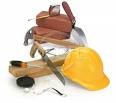- Details
- Category: Market Updates Market Updates
- Published: 01 November 2009 01 November 2009
- Hits: 14925 14925
With as many bank owned properties and Idaho Short Sales available,
there are opportunities for home buyers to take advantage of fixer upper financing!

Many of these distressed properties may not qualify for traditional financing without having some repairs completed. Most banks and certainly short sale owners will not invest money into needed repairs.
Introducing the FHA 203(k) Loan Program! New guidelines provide for high loan to value ratios as well as competitive interest rates.
Application Process
This describes a typical step-by-step application/mortgage origination process for a transaction involving the purchase and rehabilitation of a property. It explains the role of HUD, the mortgage lender, the contractor, the borrower, consultant, the plan reviewer, appraiser and the inspector.
A. Homebuyer Locates the Property.
B. Preliminary Feasibility Analysis.After the property is located, the homebuyer and their real estate professional should make a marketability analysis prior to signing the sales contract. The following should be determined:
1) The extent of the rehabilitation work required;
2) Rough cost estimate of the work; and
3) The expected market value of the property after completion of the work. Note: The borrower does not want to spend money for appraisals and repair specifications (plans), then discover that the value of the property will be less than the purchase price (or existing indebtedness), plus the cost of improvements.
C. Sales Contract is Executed. A provision should be included in the sales contract that the buyer has applied for Section 203(k) financing, and that the contract is contingent upon loan approval and buyer's acceptance of additional required improvements as determined by HUD or the lender.
D. Homebuyer Selects Mortgage Lender. Call HUD Field Office for a list of lenders.
E. Homebuyer Prepares Work Write-up and Cost Estimate. A consultant can help the buyer prepare the exhibits to speed up the loan process.
F. Lender Requests HUD Case Number. Upon acceptance of the architectural exhibits, the lender requests the assignment of a HUD case number, the plan reviewer, appraiser, and the inspector.
G. Fee Consultant Visits Property.The homebuyer and contractor (where applicable) meet with the fee consultant to ensure that the architectural exhibits are acceptable and that all program requirements have been properly shown on the exhibits.
H. Appraiser Performs the Appraisal.
I. Lender Reviews the Application The appraisal is reviewed to determine the maximum insurable mortgage amount for the property
J. Issuance of Conditional Commitment/Statement of Appraised Value. This is issued by the lender and establishes the maximum insurable mortgage amount for the property.
K. Lender Prepares Firm Commitment Application. The borrower provides information for the lender to request a credit report, verifications of employment and deposits, and any other source documents needed to establish the ability of the borrower to repay the mortgage.
L. Lender Issues Firm Commitment. If the application is found acceptable, the firm commitment is issued to the borrower. It states the maximum mortgage amount that HUD will insure for the borrower and the property.
M. Mortgage Loan Closing. After issuance of the firm commitment, the lender prepares for the closing of the mortgage. This includes the preparation of the Rehabilitation Loan Agreement. The Agreement is executed by the borrower and the lender in order to establish the conditions under which the lender will release funds from the Rehabilitation Escrow Account. Following closing, the borrower is required to begin making mortgage payments on the entire principal amount for the mortgage, including the amount in the Rehabilitation Escrow Account that has not yet been disbursed.
N. Mortgage Insurance Endorsement. Following loan closing, the lender submits copies of the mortgage documents to the HUD office for mortgage insurance endorsement. HUD reviews the submission and, if found acceptable, issues a Mortgage Insurance Certificate to the lender.
O. Rehabilitation Construction Begins. At loan closing, the mortgage proceeds will be disbursed to pay off the seller of the existing property and the Rehabilitation Escrow Account will be established. Construction may begin. The homeowner has up to six (6) months to complete the work depending on the extent of work to be completed. (Lenders may require less than six months.)
P. Releases from Rehabilitation Escrow Account. As construction progresses, funds are released after the work is inspected by a HUD-approved inspector. A maximum of four draw inspections plus a final inspection are allowed. The inspector reviews the Draw Request (form HUD-9746-A) that is prepared by the borrower and contractor. If the cost of rehabilitation exceeds $10,000, additional draw inspections are authorized provided the lender and borrower agree in writing and the number of draw inspections is shown on form HUD-92700, 203(k) Maximum Mortgage Worksheet.
Q. Completion of Work/Final Inspection.When all work is complete according to the approved architectural exhibits and change orders, the borrower provides a letter indicating that all work is satisfactorily complete and ready for final inspection. If the HUD-approved inspector agrees, the final draw may be released, minus the required 10 percent holdback. If there is unused contingency funds or mortgage payment reserves in the Account, the lender must apply the funds to prepay the mortgage principal.
Read the entire HUD article with FHA 203(k) Loan Guidelines here.
HUD in Idaho Nampa Homes Short Sales in Boise Search Distressed Properties Idaho Realtor
Continue to 203(k) Rehabilitation Loans Questions and Answers


